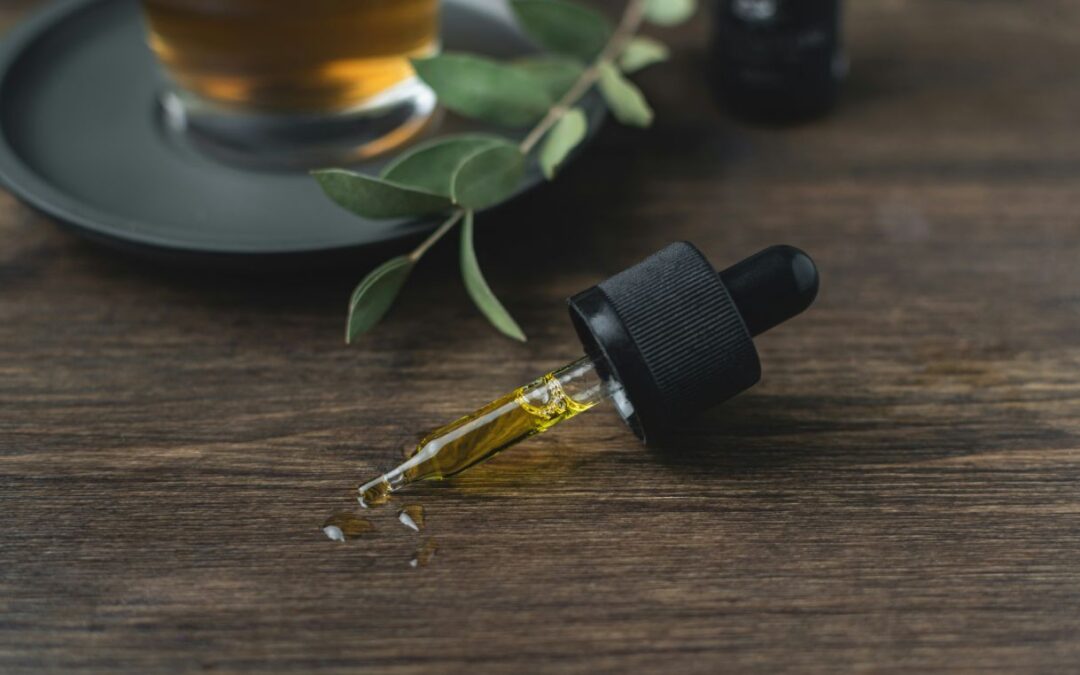Cannabis oil is a highly concentrated form of cannabis, made by extracting cannabinoids like THC and CBD from the cannabis plant. This product has become highly sought after for both medical and recreational users due to its potent effects and the versatility of its applications. Understanding how cannabis oil is made is essential for appreciating its value and the technology behind its production, as well as looking into the ways it can positively impact your life.
In this article, let’s delve into the intricacies of cannabis oil, the process of its creation, and its multitude of uses. We’ll also explore the quantity of cannabis required to produce oil, the specific parts of the plant utilized in its creation, its various uses, methods of consumption, and the demographics it best serves.
What is cannabis oil?
Cannabis oil is an extract derived from the cannabis plant, containing concentrations of cannabinoids, the compounds responsible for the plant’s psychoactive and therapeutic effects. The most well-known cannabinoids are tetrahydrocannabinol (THC), which induces the psychoactive effects associated with marijuana, and cannabidiol (CBD), which is non-psychoactive and attributed with numerous health benefits (Atakan, 2012).
The oil can vary in its composition and potency, depending on the method of extraction and the parts of the plant used.
How is cannabis oil made?
The process of how cannabis oil is made involves extracting the desired chemical compounds (cannabinoids, terpenes, etc.) from the cannabis plant material. This can be achieved through several methods, each varying in complexity, safety, and the quality of the final product.
Below, we delve into the common methods of cannabis oil extraction, outlining the steps and considerations involved in each technique.
Solvent extraction
- Choosing a solvent — Common solvents include ethanol, butane, propane, and CO2. Each solvent has its pros and cons regarding the safety, efficiency, and purity of the final product.
- Soaking and stripping — The plant material is soaked in the solvent, which dissolves the cannabinoids and terpenes. This mixture is then strained to remove the solid plant matter.
- Evaporation — The solvent is evaporated, often using heat and a vacuum pump, leaving behind the concentrated cannabis oil. Care must be taken to remove all solvent residues to ensure the oil is safe for consumption. (Lee et al., 2021)
CO2 extraction
- Supercritical fluid extraction — This method uses CO2 under high pressure and temperature to act as a solvent. It’s considered one of the cleanest and most efficient extraction methods.
- Extraction process — Cannabis plant material is placed in an extraction chamber. Supercritical CO2 is then forced through the material, extracting cannabinoids and terpenes.
- Separation — The CO2-cannabinoid mixture is moved to a separation unit where the pressure is reduced, allowing the CO2 to return to its gaseous state and leaving behind pure cannabis oil. (Lee et al., 2021)
Oil infusion
- Decarboxylation — Cannabis must first be decarboxylated by heating it, which converts THCA to THC, ensuring the oil will have its psychoactive effects.
- Infusion — The decarboxylated cannabis is then combined with a carrier oil (like coconut or olive oil) and heated gently for several hours, allowing the cannabinoids to infuse into the oil.
- Straining — The mixture is strained to remove plant matter, resulting in a cannabinoid-infused oil. (Patel, R. 2019)
How many grams of cannabis does it take to make oil?
The amount of cannabis needed to produce oil depends significantly on the desired potency and extraction method used. Generally, to produce a small batch of cannabis oil, approximately one ounce (about 28 grams) of cannabis is required to produce about 3–4 grams of oil. This ratio can vary based on the efficiency of the extraction process and the quality of the cannabis used (Patel, R. 2019).
Parts of the plant used to make CBD oil
CBD oil is specifically made from the stalks, leaves, and flowers of the hemp plant, a cannabis plant variety that is high in CBD and low in THC. These parts of the plant contain the highest concentrations of cannabidiol, making them ideal for producing CBD oil. The seeds, while nutritious, contain negligible CBD and are not typically used for CBD oil production.
The many uses of cannabis oil
- Chronic pain relief — Cannabis oil is well-regarded for its effectiveness in managing chronic pain associated with conditions such as arthritis, fibromyalgia, and migraines due to its anti-inflammatory and analgesic properties.
- Anxiety and depression management — The calming effects of certain cannabinoids, such as CBD, have been shown to reduce symptoms of anxiety and depression, making cannabis oil a natural alternative to traditional psychiatric medications.
- Epilepsy and seizure disorders — High-CBD cannabis oil has been proven to reduce the frequency and severity of seizures in individuals with epilepsy, including hard-to-treat forms like Dravet syndrome and Lennox-Gastaut syndrome.
- Cancer-related symptoms — Cannabis oil is used to alleviate symptoms related to cancer treatment, such as nausea, vomiting, and pain, improving the quality of life for patients undergoing chemotherapy.
- Neurodegenerative diseases — There’s growing evidence that cannabis oil could have neuroprotective properties, potentially benefiting conditions such as Alzheimer’s disease, Parkinson’s disease, and multiple sclerosis by reducing inflammation and supporting neural health.
- Skin conditions — Applied topically, cannabis oil can help address skin conditions like eczema, psoriasis, and acne due to its anti-inflammatory and sebum-regulating properties (Russo, 2011).
The many ways you can consume cannabis oil
- Edibles — Cannabis oil can be infused into a variety of foods and drinks, offering a discreet and convenient way to consume cannabis with longer-lasting effects.
- Topicals — Creams, balms, and lotions infused with cannabis oil can be applied directly to the skin for localized relief of pain, inflammation, or skin conditions.
- Vaporizing — Cannabis oil can be vaporized using specially designed vape pens, providing a smokeless option that offers immediate effects.
- Sublingual Drops — Placing cannabis oil under the tongue allows for fast absorption into the bloodstream, offering a quick onset of effects.
- Capsules and Pills — For those seeking precise dosages and a no-mess method, cannabis oil capsules and pills are an effective and discreet option (Atakan, 2012).
Who is cannabis oil best for?
Cannabis oil can benefit a wide range of individuals, from those seeking relief from medical conditions to recreational users looking for potent effects. Patients with chronic pain, anxiety, epilepsy, and other conditions may find it particularly beneficial. However, it’s important for new users to start with low doses due to their potency and consult with a healthcare provider to ensure it’s appropriate for their health condition (Russo, 2011).
In conclusion — explore the benefits of cannabis oil for yourself
Understanding how cannabis oil is made reveals the careful process and attention to detail required to produce this potent and versatile product. From the selection of the plant parts to the extraction methods, each step is crucial in determining the quality and efficacy of the final product. And as the legality and acceptance of cannabis products continue to evolve, so too will the innovations in cannabis oil production and use.
If you’re looking to discover the pinnacle of cannabis quality for yourself, do so with unparalleled customer service at Shango. Here, where we’re not just selling premium CBD oil but an entire premium cannabis experience. From the carefully curated ambiance of our dispensaries to the vast selection of top-notch cannabis flowers, topicals, edibles, and more, Shango is dedicated to elevating your cannabis journey.
Don’t just take our word for it; experience the Shango difference yourself. Explore our exclusive range of cannabis cartridges, browse our entire product lineup, or find a Shango dispensary near you today. Whether you’re a connoisseur or new to the world of cannabis, our friendly staff at various locations nationwide are here to guide you in selecting the perfect product to meet your needs.
References:
- Lee, A., Kim, S., & Choi, M. (2021). Efficiency and Safety of Supercritical CO2 Extraction in Cannabis Oil Production. Journal of Cannabis Research, 3(2), 134-142.
- Patel, R. (2019). Cannabis Oil Extraction Techniques: Traditional and Modern Approaches. New York: Green Botany Press.
- Atakan, Z. (2012). Cannabis, a complex plant: different compounds and different effects on individuals. Therapeutic Advances in Psychopharmacology, 2(6), 241-254.
- Iffland, K., & Grotenhermen, F. (2017). An Update on Safety and Side Effects of Cannabidiol: A Review of Clinical Data and Relevant Animal Studies. Cannabis and Cannabinoid Research, 2(1), 139-154.
- Russo, E. B. (2011). Taming THC: potential cannabis synergy and phytocannabinoid-terpenoid entourage effects. British Journal of Pharmacology, 163(7), 1344-1364.


